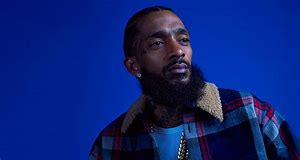 The end of March brought news of the senseless, tragic death of Los Angeles Hip Hop artist Ermias Davidson Asghedom, more famously known as “Nipsey Hu$$le”. Gunned down in front of the Marathon apparel and music store he had founded and built, his murder has shocked friends, fans and followers alike. Two other victims in the shooting survived. The many celebrities, from Dr. Dre to Jay-Z to Charlamagne Tha God, have expressed their shock at this murder and their condolences to his family. Some of the initial news reports can be found at The Blast (https://theblast.com/nipsey-hussle-dead/) and The Grio (https://thegrio.com/2019/03/31/breaking-rapper-nipsey-hussle-shot-and-killed-outside-of-los-angeles-store/).
The end of March brought news of the senseless, tragic death of Los Angeles Hip Hop artist Ermias Davidson Asghedom, more famously known as “Nipsey Hu$$le”. Gunned down in front of the Marathon apparel and music store he had founded and built, his murder has shocked friends, fans and followers alike. Two other victims in the shooting survived. The many celebrities, from Dr. Dre to Jay-Z to Charlamagne Tha God, have expressed their shock at this murder and their condolences to his family. Some of the initial news reports can be found at The Blast (https://theblast.com/nipsey-hussle-dead/) and The Grio (https://thegrio.com/2019/03/31/breaking-rapper-nipsey-hussle-shot-and-killed-outside-of-los-angeles-store/).
More details will be revealed over the next few days and weeks, but speculation on the reasons for this attack has ranged from some escalation of gang violence (he was once affiliated with the Crips in Los Angeles and had spoken about his early life in the local drug trade) to a video documentary he had recently announced centering on Dr. Sebi, an alternative health practitioner who was himself rumored to have ben targeted and killed because his opposition to drugs and his success in treating people with natural remedies were seen as a threat to the pharmaceutical drug industry (See the article in The Root, https://www.theroot.com/5-mysteries-surrounding-the-life-and-death-of-dr-sebi-1790856373) to the larger issue of his plans to revitalize the Crenshaw area of Los Angeles through real-estate and other economic strategies, fueled by his musical successes (See an article in Forbes, https://www.forbes.com/sites/zackomalleygreenburg/2019/02/20/nipsey-hussle-opportunity-zone-real-estate-mogul-blueprint/#62420ed86364).
Nipsey Hu$$le’s story, which includes guest appearances on Larry Wilmore’s Nightly Show in 2016, The Breakfast Club and other programs, as well as his recent Grammy nomination for best 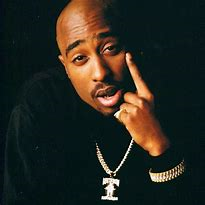 rap album and his performance at the 2019 Super Bowl, nearly parallels those of others who have rocketed to fame for their artistic talents but were later cut down
rap album and his performance at the 2019 Super Bowl, nearly parallels those of others who have rocketed to fame for their artistic talents but were later cut down 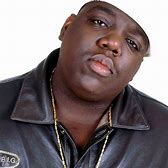 either because of their fame of because of their commitment to lifting up their communities. On the national front, the names Tupac “2Pac” Shakur and Christopher “Biggie Smalls/Notorious B.I.G” Wallace are the best known, but these tragedies play out far too often in every city,
either because of their fame of because of their commitment to lifting up their communities. On the national front, the names Tupac “2Pac” Shakur and Christopher “Biggie Smalls/Notorious B.I.G” Wallace are the best known, but these tragedies play out far too often in every city, 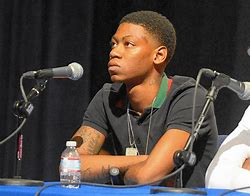 and their impact on local communities is just as traumatic. In Baltimore, Maryland, Tyriece Trayvon “Lor Scoota” Watson (left), 23, was gunned down on June 25, 2016 on his way from a community peace rally (“Killing of Baltimore rapper Lor Scoota — ‘one of the voices of the city’ — stuns community”, The Baltimore Sun,
and their impact on local communities is just as traumatic. In Baltimore, Maryland, Tyriece Trayvon “Lor Scoota” Watson (left), 23, was gunned down on June 25, 2016 on his way from a community peace rally (“Killing of Baltimore rapper Lor Scoota — ‘one of the voices of the city’ — stuns community”, The Baltimore Sun, 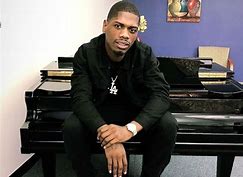 https://www.baltimoresun.com/news/maryland/crime/bs-md-ci-rapper-shooting-20160626-story.html). Dominic “Nick Breed” Grant (right), 24, “who advocated for nonviolence and whose lyrics often reflected the city’s trauma”, was killed October 21, 2018 (“Rapper whose lyrics reflected Baltimore’s pain fatally shot”, https://baltimore.cbslocal.com/2018/10/23/rapper-whose-lyrics-reflected-baltimores-pain-fatally-shot/). Washington, DC-area rapper Theodore
https://www.baltimoresun.com/news/maryland/crime/bs-md-ci-rapper-shooting-20160626-story.html). Dominic “Nick Breed” Grant (right), 24, “who advocated for nonviolence and whose lyrics often reflected the city’s trauma”, was killed October 21, 2018 (“Rapper whose lyrics reflected Baltimore’s pain fatally shot”, https://baltimore.cbslocal.com/2018/10/23/rapper-whose-lyrics-reflected-baltimores-pain-fatally-shot/). Washington, DC-area rapper Theodore 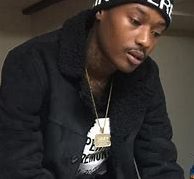 Dashawn “30 Glizzy” Pigford (left), 26, “a nice young man with a promising career,” according to attorney John McKenna, who had represented him in court, was shot and killed September 6, 2017 in South Baltimore (https://www.baltimoresun.com/news/maryland/crime/bs-md-ci-30-glizzy-killed-20170907-story.html).
Dashawn “30 Glizzy” Pigford (left), 26, “a nice young man with a promising career,” according to attorney John McKenna, who had represented him in court, was shot and killed September 6, 2017 in South Baltimore (https://www.baltimoresun.com/news/maryland/crime/bs-md-ci-30-glizzy-killed-20170907-story.html).
These killings seem to be occurring at a time when these artists are just starting to transcend the more stereotypical aspects of their musical careers – the lyrics about sex, drugs, gangs and gun violence – and finding their “comfort zones” in the areas of entrepreneurship, community uplift and personal growth. This begs the questions: How many of these murders truly are gnag-related, and how many of them may be motivated by some effort, by some person or persons still unknown, to prevent them from using their exploding “street cred” to help lift their communities out of the cycles of poverty, violence and despair that often seem inescapable?
We continue to await answers, or even clues of answers, to these questions. In the meantime, we pray for some semblance of peace for their families, friends and fans, and for us as a community to find or develop ways in which those who are left and are still doing positive work in their communities can be protected from a similar fate.
The communities of activists and artists have work to do! Let’s embrace those positive forces who reach out to the people and help move the community forward.
